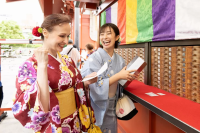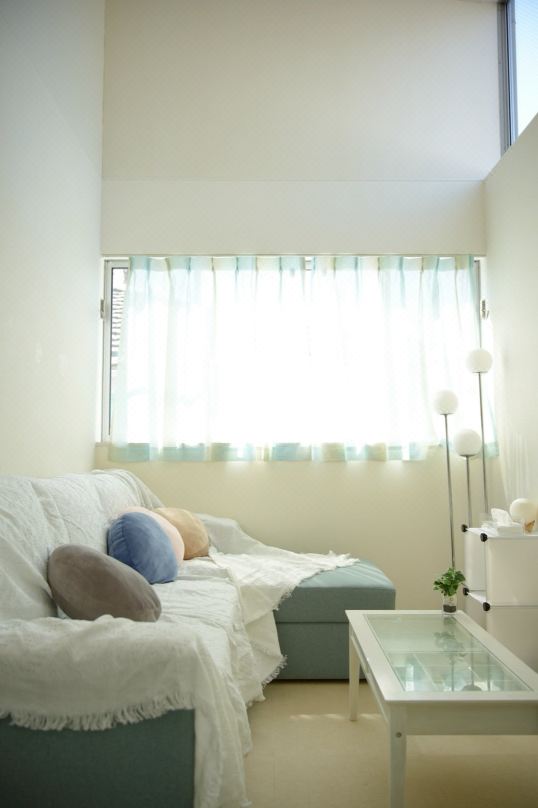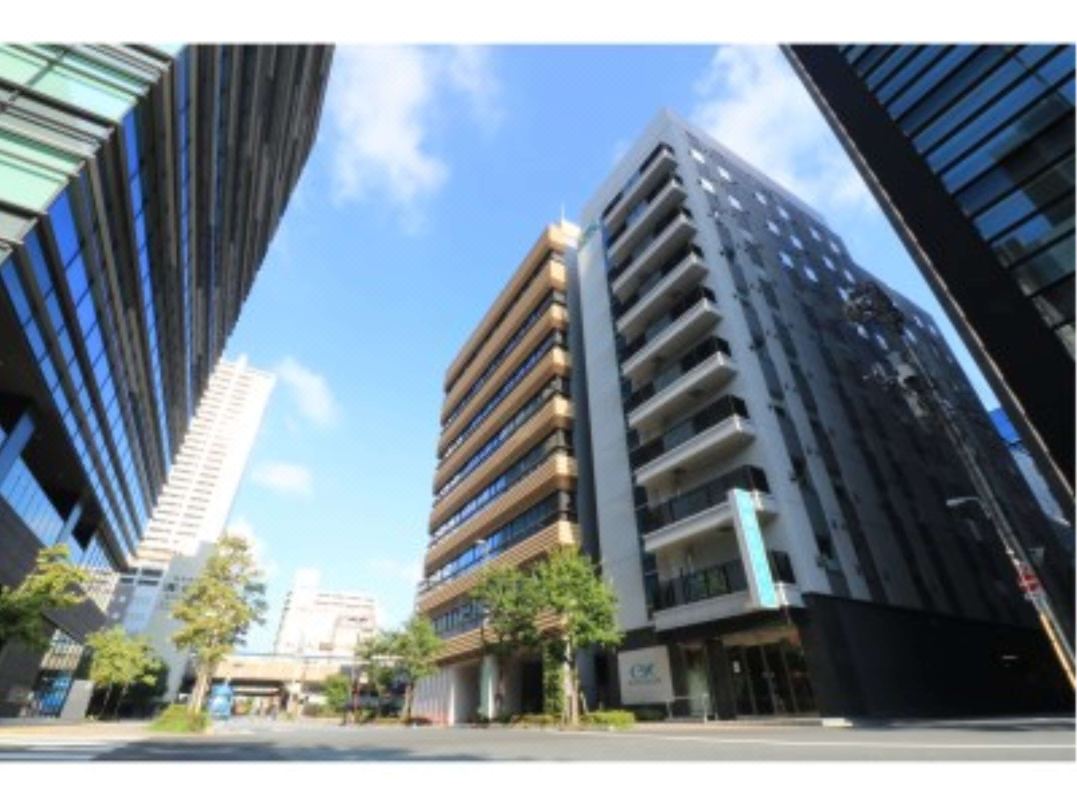Sensoji Temple: Asakusa and Tokyo's Oldest Temple

Sensoji Temple in Asakusa, first established in 645 AD, is Tokyo's oldest temple. The sheer size of the temple precincts is large enough for visitors to spend an entire day strolling through the area. Here we introduce the various important landmarks and locations that deserve a closer look.

Sensoji Temple, one of the most popular destinations in Tokyo, is the city's oldest temple. The entire district of Asakusa has flourished around this temple, which has attracted countless pilgrims and visitors since ancient times.
However, due to the large size of its grounds, there are many visitors who don't get a chance to see everything this temple has to offer. For those who want to see all of Sensoji Temple, follow this recommended route.
Table of Contents:
1. Kaminarimon - The Thunder Gate
2. Nakamise-dori - The Famous Shopping Street
3. Hozomon Gate
4. Omikuji - Fortune Paper Strips
5. Chozuya - The Purification Area
6. Jokoro - The Large Incense Burner
7. Sensoji Temple's Main Hall
8. Yokodo - Get a Red Seal
9. Yakushido Hall
10. Awashimado
11. Zenizuka Jizodo - A Hall for the Jizo
12. The Garden behind the Main Hall
13. Nitenmon Gate
14. Shinboku - A Sacred Tree
15. Bentendo Hall
16. Behind Nakamise-dori
Sensoji Temple, also known as the Asakusa Kannon Temple, was founded back in 645. It is said that the temple was built near the Sumida River and dedicated to Kannon, the goddess of mercy. Although it was known to have first been built in 645, it was destroyed once and rebuilt as the modern temple during World War II.
Nowadays, Sensoji is where Tokyo’s largest festival, the Sanja Matsuri is held during the late spring time.
Kaminarimon - The Thunder Gate

Asakusa's iconic bright red lantern, weighing about 700 kilograms, sits grandly at the Kaminarimon. Its name meaning "Thunder Gate," this grand landmark is hard to miss and is a spot where many gather to take commemorative photos.

Did you know that this lantern was provided by Matsushita Electric Industrial (now known as Panasonic)?
Read also
Nakamise-dori - The Famous Shopping Street

Nakamise-dori is the shopping street that greets you as you pass through the Kaminarimon Gate. It is one of Japan's oldest shopping districts.

These mini dumplings called kibi dango, are from Azuma, a popular shop on Nakamise-dori.
With over 90 different stands along the streets of Nakamise-dori, you can enjoy both shopping and trying out the tasty treats that are unique to Asakusa.
Hozomon Gate

Hozomon Gate, the Treasure-House Gate, is what awaits those who get past the streets of Nakamise-dori.
Atop the gate is a collection facility with disaster prevention equipment, where several precious cultural artifacts are stored.
The massive waraji* sandals on the backside of the gate are made using about 2,500 kilograms of straw. These sandals are considered charms that ward off evil. They also represent the power of the Nio Kings, the muscular guardian deities standing at the entrance of many Buddhist temples.
*Waraji: Sandals made from straw rope that in the past were the standard footwear of the common people in Japan
Omikuji - Fortune Paper Strips

Once you've passed through the Hozomon Gate, you should give omikuji a try. Omikuji are random fortunes written on strips of paper at Shinto shrines and Buddhist temples in Japan.

Sensoji Temple's omikuji are rumored to have a high rate of misfortune. If you draw a "kyou" (bad luck), make sure to bind it on the special rack set up for binding omikuji. It is believed that the guardian deities of Sensoji will take over and protect you from the bad luck.
Read also
Chozuya - The Purification Area

Chozuya is where you go to purify yourself before you enter the main hall. You sprinkle some water on your hands and mouth.

The center is adorned with a stone statue of Ryushinzo, who rules over water.
Jokoro - The Large Incense Burner

Right in front of the main hall is the Jokoro. People gather and cover themselves in the smoke. It's believed that being engulfed in the smoke of incense will help your wounds heal faster. This belief has been passed down for ages.
Sensoji Temple's Main Hall


Once you reach the main hall, you can make your monetary offer and pray to the Kannon enshrined in the back of Shrine.
At Sensoji Temple, Buddhist visitors put their hands together in front of their chest and recite the words Namu Kanzeon Bosatsu. Namu Kanzeon Bosatsu is the Japanese Buddhist form of saying "Amen to Kannon Boddhisattva."
Yokodo - Get a Red Seal

After you descend from the western staircase of the main hall you will find the Yokodo. Here you can get a temple seal stamp known as goshuin.
A goshuin stamp has the name of the temple, the date, and several seals imprinted on it. At Yokodo, there are two types of goshuin available. They feature the Kannon and one of the seven gods of fortune, named Daikokuten, respectively. A goshuin not only proves that you've paid your respects but it is also great to commemorate your trip.
Yakushido Hall

Standing at the back of Yokodo is the Yakushido, which was established about 345 years ago. It is among the oldest buildings in Sensoji Temple. Yakushi-nyorai, the Buddha of healing, is enshrined here.
Awashimado

When you move further past Yakushido you can see Awashimado, where Amida-nyorai and Awashima-myojin are enshrined. Every year on February 8th, the ritual Harikuyo is performed, where used, bent needles are inserted into tofu and konjac and offered in a service.

The five-storied pagoda lies behind the the small pagoda dedicated to sutra offerings. When you look at the tips of these two pagodas, you'll notice that they have a similar design.
Zenizuka Jizodo - A Hall for the Jizo

Zenizuka Jizodo, where people go to pray for prosperity in business, is found a few minutes north of Awashimado. Buried under the stone pagoda is a type of currency from the Edo Period - which lies at the origin of its name (zeni is a term for money, and zuka refers to a hill or mound).

This is the Kankan Jizo monument, found to the right of the Zenizuka Jizodo. There is an ancient custom to knock on the body of this Jizo statue with a small stone while offering a prayer. "Kankan" is the sound of visitors using the stones placed next to the Jizo to knock on its body, and this sound became the origin of its name.
The Garden behind the Main Hall

After leaving Zenizuka Jizodo behind, move toward the east and you will find a garden-like area.
Walking around the shrubbery, you meet several stone monuments and statues. There is no better place to take a break and relax in the shade.
Nitenmon Gate

If you walk towards the main hall for about 10 minutes, you will see a large gate to your left. This is known as the Nitenmon Gate, where two of Buddhism's four guardians, Jikokuten and Zochoten, are enshrined. It has also been designated as one of Japan's important cultural properties.
Shinboku - A Sacred Tree
To the left of the Nitenmon Gate, in front of the police box, looms a massive ginko tree, which is over 800 years old.
It's said to have grown from a branch that general Minamoto no Yorimoto (1147-1199) stuck into the ground when he visited the Sensoji Temple. You can feel the unfathomable power of life and nature from this tree, which has survived even the war.
Bentendo Hall

To the southeast of the main hall is the Bentendo, which is one of Kanto's three Daibento's, and houses the Rojo-benzaiten. Benzaiten was initially worshiped as the goddess of music, wisdom, and wealth in India. In Japan, she is known as one of the Seven Gods of Fortune.
Next to the temple is an impressive bell tower. You can only hear it ring every morning at 6:00, or during New Year's Eve. The sounds of the bell ringing over all of Asakusa is a sound you must hear.
Behind Nakamise-dori

The path behind Nakamise-dori is a great way to make your way back to the Kaminarimon Gate. Not only is it less crowded than the main street, it also has several curious souvenir shops and eateries.
Strolling back with an ice cream or shaved ice and looking at the scenery of Nakamise-dori from behind can be a highlight in and of itself.
Hotels near Sensoji Temple
Read also
94年生まれ。神戸出身、東京在住。アメリカからの帰国子女。旅、アート、食が大好きな大学生。


















































![[2026] Top 5 Strawberry Picking Spots in Tokushima, Naruto| Farms and Access Guide for January to May](https://resources.matcha-jp.com/resize/720x2000/2025/03/06-227165.webp)
![[Yamanashi/ Hokuto City] 4 Hot New Spots Opening in 2026](https://resources.matcha-jp.com/resize/720x2000/2025/12/12-252747.webp)


